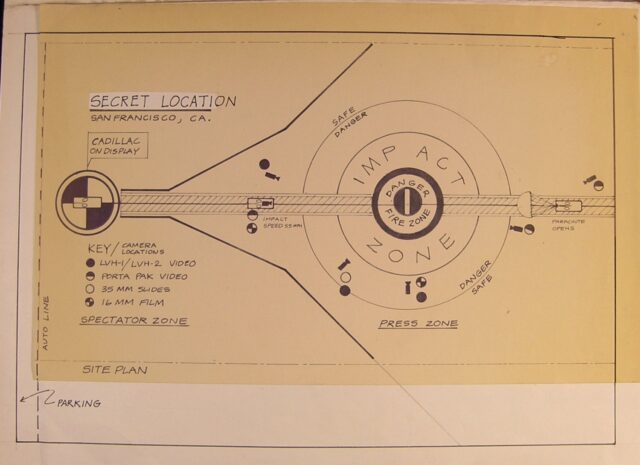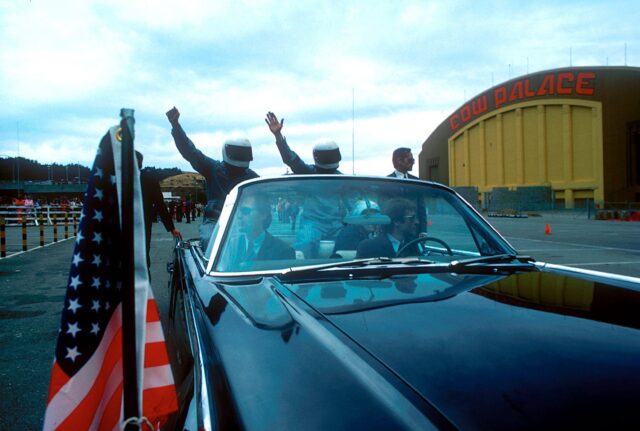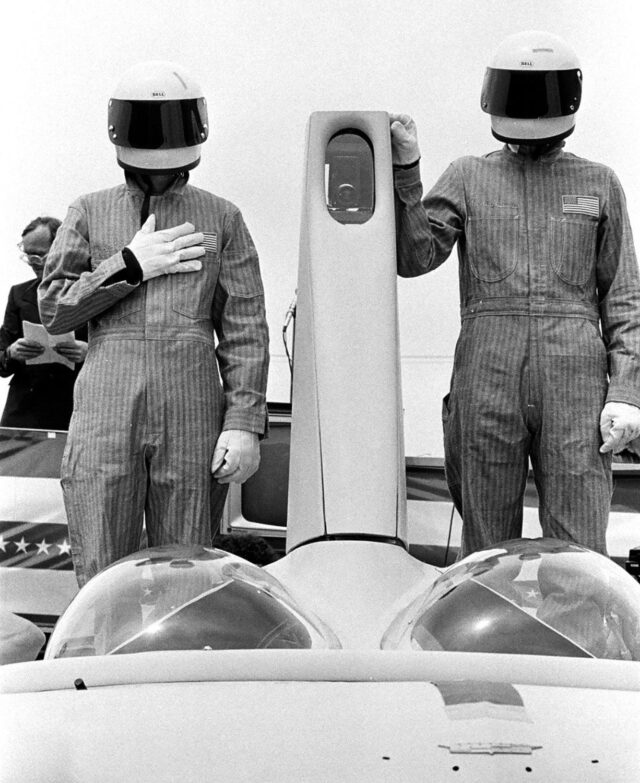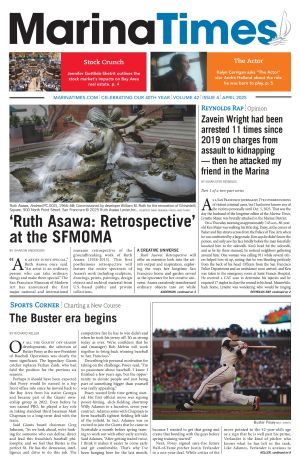This summer 500 Capp Street will celebrate two seminal voices of the Bay Area’s conceptual art scene with the next installation of 2025 Guggenheim Fellow Mildred Howard’s Collaborating With the Muses and a 50th Anniversary tribute to radical art and architecture collective Ant Farm’s 1975 performance and subsequent video work, Media Burn, curated by Steve Seid.
Collaborating With the Muses: Part Two
Mildred Howard returns to Capp Street presenting a never-before-seen installation from a new body of work titled Untold Histories/Hidden Truths. Known for her assemblage work and installations, Howard was born in San Francisco in 1945, and has received many awards and recognitions for her approach to art and storytelling. On 500 Capp Street’s outdoor patio, visitors will encounter a reincarnation of a Junípero Serra monument draped in red textile. This is in reference to the Serra statue in Golden Gate Park that was toppled in 2020 — as well as many other monuments removed amid nationwide protests following the police murder of George Floyd. Statues of the Catholic saint and missionary were removed, driven in part by the protest movement and the recognition of the impact of Spanish Missions on Native American populations. Howard reimagines this figure to engage public space and collective memory, contributing to the city’s ongoing reckoning with its civic monuments. Mildred Howard’s art is a catalyst for dialogue and healing as part of her lifelong commitment to political engagement, site-specificity, and community-centered practice into urgent contemporary discourse.
Still Burning
July 4th, 2025 marks the 50th anniversary of a performance art event at Cow Palace titled Media Burn, conducted by Ant Farm. Ant Farm was a Bay Area-based radical art and architecture collective established in 1968 by Chip Lord and Doug Michels. Both architecture graduates, they were joined by another recent architecture graduate, Curtis Schreier. Ant Farm’s earliest projects often involved inflatables as architecture. In 1974, a commission from a rich Texan created Cadillac Ranch, a tribute to the automotive tailfin as seen through ten partially-buried Cadillacs (Lord, Michels, and Hudson Marquez).

Media Burn took place on July 4, 1975, the day that they drove a customized 1959 Cadillac El Dorado across the parking lot of the Cow Palace and into a pyramid of burning TV sets as a commentary on the grip media has over mesmerized audiences. American symbols — the automobile and the TV set — fueled the performance which took more than a year of planning. Media Burn included multiple volunteers and coverage by four local TV crews, and drew hundreds of onlookers. The resonant image from the event — the moment the El Dorado collided with the stacked televisions — was widely distributed via postcards and videos. By 1978, a catastrophic fire in Ant Farm’s studio at Pier 40 on San Francisco’s Embarcadero resulted in the disbandment of the art collective.
This celebratory exhibition includes a variety of documentation surrounding the outrageous performance, including Ant Farm souvenirs, press releases, architectural drawings of the site, and extensive documentation of the customized Cadillac, known as the Phantom Dream Car. Photo documentation taken by local photographers will adorn the walls, and video work will be offered continuously in a specially prepared screening area.

For 25 years, guest curator Steve Seid was an experimental media curator at the Pacific Film Archive in Berkeley where he curated hundreds of public programs, taught media literacy for high school teachers, engaged in preservation projects, and co-edited Radical Light: Alternative Film & Video in the San Francisco Bay Area, 1945-2000. Seid also published Media Burn: Ant Farm and the Making of an Image (Inventory Press, 2020).
About 500 Capp Street
500 Capp Street in San Francisco is the historic home turned environmental artwork of the late, pioneering artist David Ireland. It is a 360-degree portrait of one of the West Coast’s most important practitioners of conceptual and installation art. 500 Capp Street is not a museum or historic home in the traditional sense. It is a living sculpture. As an organization, 500 Capp Street is committed to artistic experimentation while holding up Bay Area conceptualism via driven spaces and process-oriented provocative arts programming.
“Collaborating With the Muses: Part Two” runs from June 19 (Juneteenth) – Aug. 23.
“Still Burning, Celebrating the 50th Anniversary of Ant Farm’s Media Burn” runs July 4 – Aug. 23. Both exhibits are at 500 Capp Street.
Sharon Anderson is an artist and writer in Southern California. She can be reached at mindtheimage.com




